We'll never see an outlet like this again
Wes Unseld's signature skill was the most devastating offensive weapon of its time. So why don't we see outlet passes anymore?


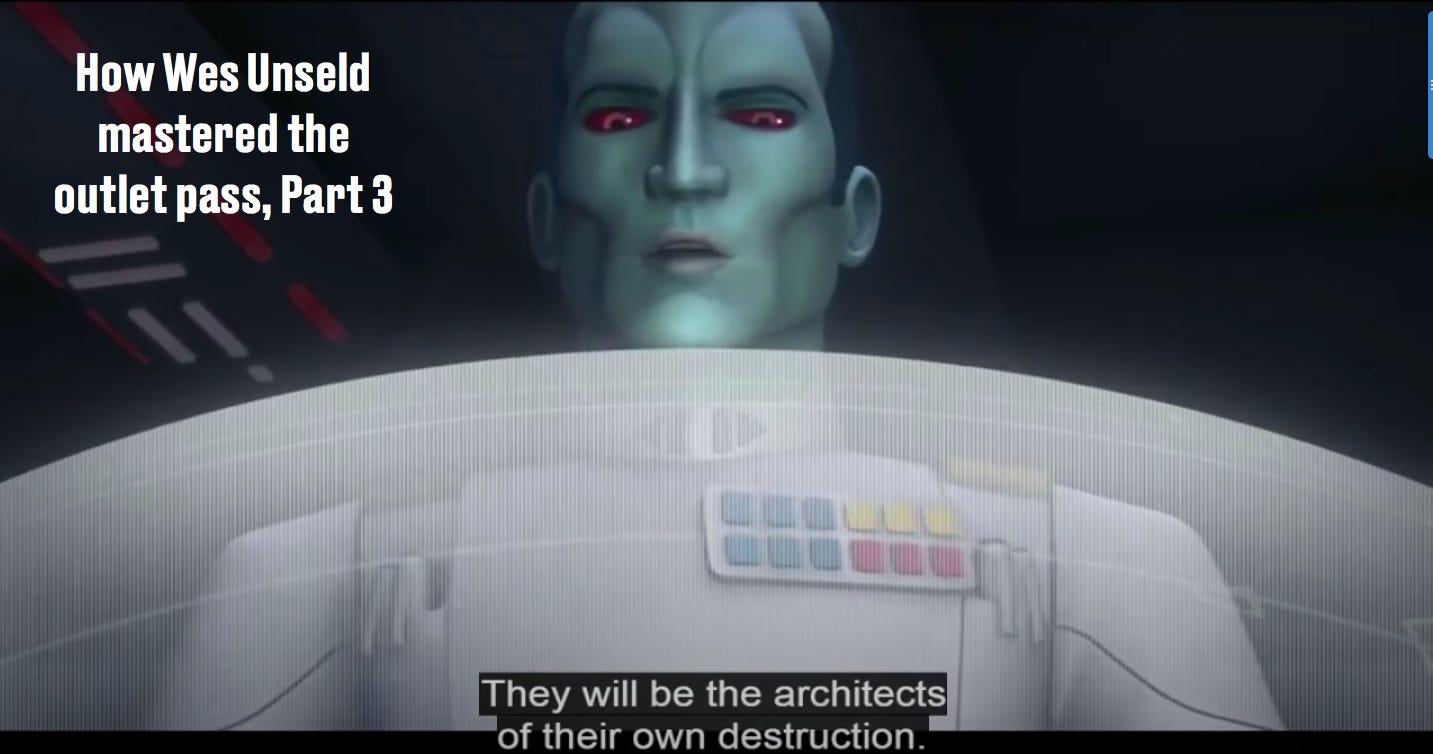
If you don’t know by now, I took a buyout from Vox Media and no longer work at SB Nation. The short-term plan is to commit even more time to this newsletter, take on other freelance gigs, and who knows after that. If you’d like to hear more and/or have some recommendations, hit me up at mikeprada1@gmail.com. Here’s to the next chapter.
Wes Unseld passed away last week at the age of 74, adding a small cherry to the top of the bitter sundae of recent awful world events. Unseld was the greatest player in my favorite team’s basketball history, and that undersells his impact to the franchise and the sport. David Aldridge’s tribute in The Athletic (subscription required) is a must-read for anyone wanting to learn more about Unseld the person.
Unseld was nothing short of a savant in his playing days. He was known for his unselfish demeanor, dominant rebounding, high-post passing, and bone-crushing screens. He was shorter than most centers, but made up for it with his positioning and physicality. Though he won MVP as a rookie, he was more an on-court beacon than flashy star. (Think late-career Tim Duncan … like, post-2010 or so.) If this newsletter existed in the 70s, Wes would be its favorite player.
It’s appropriate that Unseld’s signature skill was the outlet pass, which ends a defensive possession and triggers an easy scoring opportunity in one quick motion. Unseld, according to legend, could grab a board under one hoop and instantly fling it all the way to the other backboard. His outlets were worth far more than the one rebound and occasional one assist tallied in the box score. They allowed the Bullets’ offense to bypass two, three, four, even five defenders at once when trying to score.

Unseld’s touch on overhead passes was as accurate as an elite quarterback’s deep ball. As he snagged rebounds, the Bullets sent their wings flying up the court. Unseld’s deliveries were in the air before they passed the final defender and dropped perfectly into their laps for easy layups. Thanks to Unseld, the Bullets were masters at leaking out on missed shots.

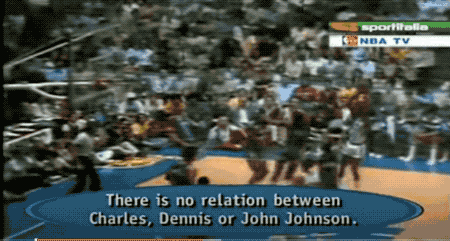
But Unseld didn’t just complete fly patterns. He also excelled with intermediate routes in the middle of the court …

… routes up the sideline …

… and shorter pitch-ahead passes that nudged a guard forward in space. Think of Kevin Porter as the Bullets’ shifty running back catching a pass in the flat.
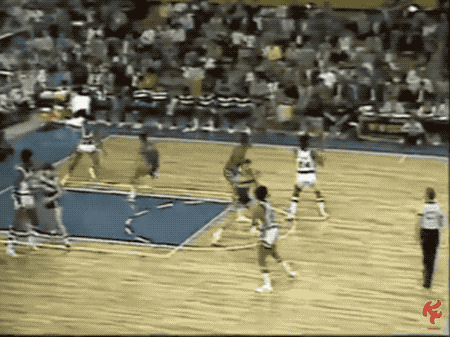
The speed and precision of Unseld’s outlet passing led to countless 2-on-1, 3-on-2, and 4-on-3 situations. He didn’t get credit for the assists, but his first pass was the most important because it created the numbers advantage. To use another cross-sport analogy, Unseld’s outlets gave the Bullets instant power plays against an empty net.
Like most great rebounders, Unseld was a master of positioning. He wasn’t much of a leaper, but made up for it by reading the trajectory of the ball, boxing the closest opponent(s) out, and/or wedging them underneath the hoop. All that prep work meant he didn’t need to leap higher than necessary to beat taller players.


Unseld also possessed unique jumping technique. Most rebounders went through a four-step process: grab the ball, protect it from everyone else, hit the floor with their back turned to his teammates, and only then turn and find an outlet. By then, the opponent is already back on defense. The best chance to create a quick-strike opportunity has evaporated.
Unseld solved that problem by combining those steps into one. Rather than going straight to the ball, Unseld attacked it at an angle whenever possible. Notice his body positioning before he jumps, when he collects the ball, and when he fires his outlet pass.
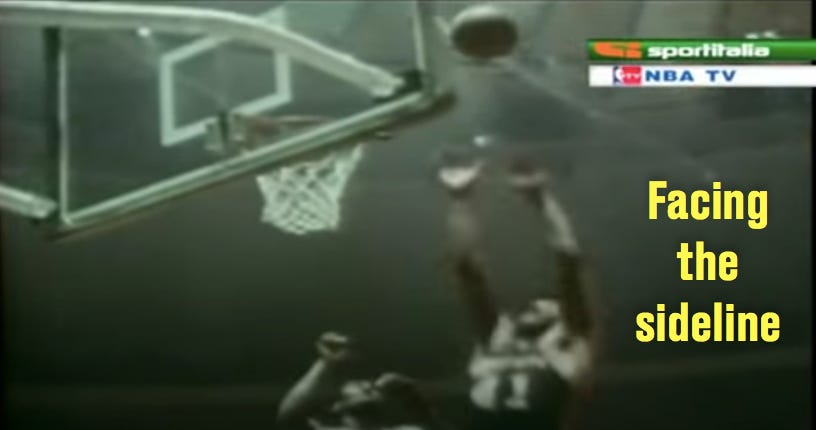
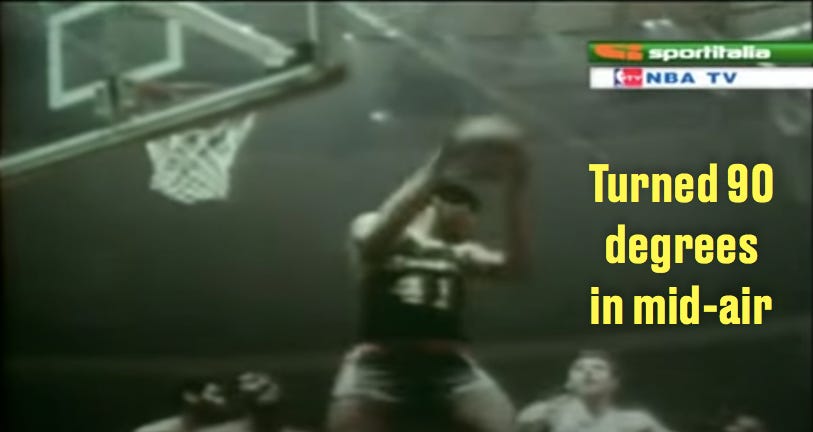

This approach combined all four boarding steps into one. He had already scanned the floor before landing and thus could spray the ball out immediately. He already did the work other rebounders only started after they pivoted on the ground.
It’s a textbook illustration of why athleticism and craft are intertwined qualities instead of separate ones. To the naked eye, Unseld’s mid-air twist came as a result of unique athletic gifts. At the same time, it’s misleading to say Unseld spun in mid-air on these boards. He instead positioned his body to create the same effect so he didn’t have to cover all 180 degrees in mid-air. The craftsmanship required to position his body properly allowed him to master a uniquely athletic move.

Unseld’s outlet passes were the most effective offensive weapon the Bullets had. The Bullets had an ordinary half-court offense, but they lit up teams in transition because Unseld could trigger immediate fast breaks off the many rebounds he grabbed.
You’d think others would emulate Unseld’s outlet passing today, especially since the game keeps getting faster and more spread out.
Yet outside of a brief Kevin Love renaissance and the occasional Nikola Jokic fly route, the outlet pass has slowly been phased out of the game. Today’s big men grab rebounds and push the ball themselves rather than seeking out a smaller teammate. Think Draymond Green, Bam Adebayo, or any number of players I’m forgetting. They create the same effect Unseld did for the Bullets, but by dribbling themselves instead of passing to a guard.
You’re probably thinking, doesn’t the ball moves faster with a pass than a dribble? It does, yes, absent all other context, But the three-point revolution created knock-on effect that dramatically neutered the impact of outlet passes. The floor geometry that once made quick pitch-aheads so valuable now cuts them off.
In plainer terms: fewer players go for offensive rebounds because they’re already standing at the three-point line. They instead drop back in transition, packing the area that an outlet passers’ receivers would catch the ball.
Compare that floor balance to a typical one you’d see in the 70s. Count the number of players anywhere near the rebounder in these two frames.


Big difference, right?
The purpose of an outlet pass is to bypass retreating defenders in one fell swoop, punishing them for chasing an offensive rebound they don’t get. What’s the point if they choose to retreat in advance instead? To use yet another cross-sport analogy, it’s a lot harder to pass through the midfield when your opponent is already crowding it.
This larger trend has accelerated in the last few years. The NBA stats site has a metric known as Contested Rebound Percentage, which measures how often teams or players grab boards when an opponent is within 3.5 feet of the ball. In 2013-14 (the first year it was tracked) the average team contested rebound percentage was 37.6 percent. Detroit snagged the highest share of contested rebounds at 44 percent. Washington collected the fewest at 33.9 percent. The range between first and last was more than 10 percent.
Here’s the 2019-20 list. A summary:
The league average was 32.2 percent. That means only one out of every three rebounds was actually up for grabs.
The Wizards, who finished last in 2013-14, would’ve ranked seventh this year.
New Orleans and Orlando are tied for first, with 34.6 percent of their boards coming when an opponent was within 3.5 feet of the ball. In 2013-14, that would have put them in a tie for 29th.
The range between first and last was less than seven percent, suggesting even more uniformity between teams.
And this is well within the three-point revolution! Back in the 70s, every rebound was an all-out war between multiple players.
Nowadays, the players who once fought for offensive boards are instead standing behind the three-point line. You can’t bypass them with long outlet passes anymore. The better move, then, is to run straight up the gut and engage them. It’s simply more practical for Adebayo to lead the break himself instead of waste time picking out a teammate in a more crowded space.
I think a lesser version of this principle explains the lowest moment of Unseld’s career: the Bullets’ four-game Finals loss to the underdog Golden State Warriors in 1975. Washington defended well in the series, but scored 11 fewer points per 100 possessions than their regular-season average.
Why? Because the Warriors neutralized the impact of Unseld’s outlet passing using the same type of tactics everyone employs today.
The Warriors played a more modern style than most of Unseld’s opponents. They built their offense around the outside scoring of Rick Barry, deployed a proto-stretch 4 in Jamaal Wilkes, and positioned centers Clifford Ray and George Johnson in the high post rather than on the block. The Warriors pulled Unseld away from the hoop and attacked the resulting driving lanes, yet still possessed enough speed and positioning to protect against Unseld’s outlet passes.

Unseld still got his fair share of boards, but the combined effect of the Warriors’ perimeter-oriented style and unconventional offensive rebound crashing angles limited the impact of his outlet passes. Unseld was forced to throw into coverage far more often than usual, which meant the Bullets got fewer easy fast-break chances. Without their transition game, they couldn’t score efficiently enough to win the series.
Let’s put a finer point on this. I found all four of those games on YouTube and tracked how the Bullets performed any time Unseld began a change of possession during the run of play. (These were mostly defensive rebounds, but I included his live-ball steals as well). The Bullets scored just 41 points the series on such plays, converting at a rate of 91.1 points per 100 possessions. (For reference, Unseld had 57 combined defensive rebounds and steals in the four-game loss). More importantly, they scored just 28 points on 14 successful “quick strike” chances, which I defined as possessions that ended within seven seconds of an Unseld defensive rebound or steal.
The Warriors’ perimeter-oriented style stressed Unseld on two levels. First, it forced his attention away from the hoop, creating rebound opportunities designed to reward the Warriors’ quickness to the ball instead of the Bullets’ strength in the trenches. The Warriors grabbed 37.5 percent of available offensive boards in the series, a far higher percentage than the Bullets surrendered normall.

Second, it positioned more Warriors to drop back on defense, limiting the impact of Unseld’s long bombs.

For a point of comparison, I also tracked the only other 1975 Bullets game I could find on YouTube: their 108-102 Game 4 semifinal loss to the Buffalo Braves. (Bob McAdoo lit them up for 50 points, but the Bullets eventually won the series). In that game alone, the Bullets scored 24 points on 17 Unseld-led changes of possession and got 21 of those points within seven seconds of Unseld securing the ball. That’s in one game — and one they lost at that!
Today’s game features 30 evolved versions of the 1975 Warriors. Every team has downsized and every team shoots loads of above-the-break threes. That means every team naturally positions its players in the landing zone for Unseld’s brilliant outlet passes. An immediate outlet pass can’t bypass multiple defenders anymore, no matter how precisely or quickly it’s thrown.
Unless the rules dramatically change again, we’ll never see another player like Wes Unseld. RIP to a legend.



